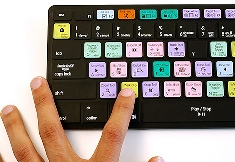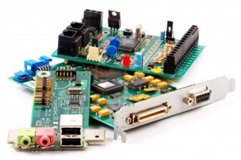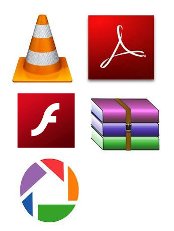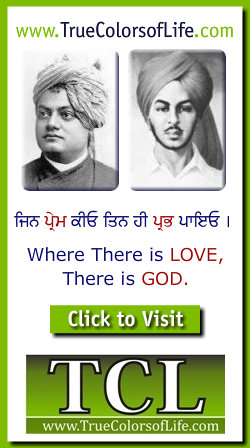

Gateway
A Gateway is either hardware or software that acts as a bridge between two networks so that data can be transferred between a number of computers. For example, when you send an e-mail to a friend or when you log in to a Web site, there is a gateway that allows the connection take place. Often, your connection to a Web site will involve many smaller connections to other servers along the way. In these cases, a number of gateways are used.
Gibibyte
A gibibyte is a unit of data storage that equals 2 to the 30th power, or 1,073,741,824 bytes.
While a gigabyte can be estimated as 10^9 or 1,000,000,000 bytes, a gibibyte is defined as exactly 1,073,741,824 bytes. This helps avoid the ambiguity associated with the size of gigabytes. A gibibyte is 1,024 mebibytes and precedes the tebibyte unit of measurement.
GIF
The letters "GIF" actually stand for "Graphics Interchange Format," but you don't need to remember that. What you should know is that a GIF is a compressed image file format. GIF images use a compression formula originally developed by CompuServe (which is why you see the term "CompuServe GIF" in Photoshop, for those of you that care). GIFs are based on indexed colors, which is a palette of at most 256 colors. This helps greatly reduce their file size. These compressed image files can be quickly transmitted over a network or the Internet, which is why you often see them on Web pages. GIF files are great for small icons and animated images, but they lack the color range to be used for high-quality photos.
Gigabyte
A gigabyte is 2 to the 30th power, or 1,073,741,824 bytes.
It can be estimated as 10 to the 9th power, or one billion (1,000,000,000) bytes. A gigabyte is 1,024 megabytes and precedes the terabyte unit of measurement. Hard drive sizes are typically measured in gigabytes, such as a 160GB or 250GB drive. The term gigabyte is often often abbreviated as simply a "gig" in speech. For example, if you have a 250GB hard drive, you could say, "I have 250 gigs of disk space." The prefix "giga" comes from the Greek word "gigas," meaning giant.
Gigahertz
One gigahertz is equal to 1,000 megahertz (MHz) or 1,000,000,000 Hz. It is commonly used to measure computer processing speeds. For many years, computer CPU speeds were measured in megahertz, but after personal computers eclipsed the 1,000 Mhz mark around the year 2000, gigahertz became the standard measurement unit. After all, it is easier to say "2.4 Gigahertz" than "2,400 Megahertz."
While gigahertz is most commonly used to measure processor speed, it can also measure the speed of other parts of the computer, such as the RAM and backside cache. The speed of these components, along with other parts of the computer, also impact the computer's overall performance. Therefore, when comparing computers, remember the number of gigahertz is not the only thing that matters.
GIGO
Stands for "Garbage In, Garbage Out." It means that if invalid data is entered in a computer program, the resulting output will also be invalid. So if a program asked you to enter a letter of the alphabet and you decided to be funny and enter "3.14159", there's a good chance the results you would get back would be pretty messed up, or "garbage." Because we computer users aren't always smart enough to enter valid data, programmers have to take extensive measures to prevent GIGO errors.
GNU
GNU (a recursive acronym for "GNU's Not Unix") is a Unix-like operating system that is available in several distributions. Most use the Linux kernel and are collectively called GNU/Linux operating systems. Some popular examples include gNewSense, Trisquel, and Venenux.
All GNU systems and programs are distributed as free software, without requiring a commercial license. Instead, they are made available under the GNU General Public License (or GPL), which states that the software may be freely used and distributed and the same rights must be passed on to other users. While the GNU General Public License was originally designed for GNU software, it is now used by many other free software programs as well.
Example: "The developer installed a GNU operating system on his secondary computer."
Google is the world's most popular search engine. It began as a search project in 1996 by Larry Page and Sergey Brin, who were two Ph.D. students at Stanford University. They developed a search engine algorithm that ranked Web pages not just by content and keywords, but by how many other Web pages linked to each page. This strategy produced more useful results than other search engines, and led to a rapid increase in Google's Web search marketshare. The Google ranking algorithm was later named "PageRank" and was patented in September of 2001. In only a short time, Google became the number one search engine in the world.

According to Google's website, the company's mission is to "organize the world's information and make it universally accessible and useful." While the Web search remains Google's primary tool for helping users access information, the company offers several other services as well. Some of these include:
Froogle - price comparison shopping
Image Search - search for images on the Web
Google Groups - online discussion forums
Google Answers - answers to questions based on a bidding system
Google Maps - maps and directions
Google Toolbar - a downloadable search tool
Blogger - a free blogging service
Gmail - Web-based e-mail with several gigabytes of storage
AdWords - Advertising services for advertisers
AdSense - Advertising services for Web publishers
Google Drive
Google Drive is a service offered by Google that allows you to store and share files online. The service was launched on April 24, 2012 and provides 5 GB of free storage. Additional storage can be purchased for a monthly fee.
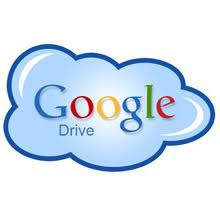
The goal of Google Drive is to provide a central place to store your files online so that you can access them from anywhere. Additionally, you can access your Google Drive from multiple devices, since the software is available for Windows, Mac OS X, Android, and iOS platforms. The service also provides a web-based interface that allows you to organize your files and search for documents by filename or content.
Besides online file storage, Google Drive provides tools for sharing files and collaborating on projects with other users over the Web. For example, instead of emailing large attachments, you can send links to the files from your Google Drive to one or more users. You can also use the web-based Google Docs applications to create or edit documents online. When you share a document with other Google Drive users, everyone can view and edit the document at the same time.
Google Drive allows you to view over 30 file types directly in your web browser. These include Google's proprietary formats, as well as other popular file types, such as Adobe Photoshop and Illustrator documents.
Gopher
The Gopher technology was invented at the University of Minnesota, whose mascot is, not surprisingly, the Golden Gopher. The gopher system allows people to search for and retrieve information using a text interface. The technology is based on a client-server structure, where a gopher client program is used to search gopher servers. These servers can store documents, articles, programs, and other information. Instead of hyperlinks, the gopher interface uses menus of links to other documents and programs.
The University of Minnesota began a licensing program for the gopher technology in 1993 as the use of gopher was spreading rapidly over the Internet. However, this was around the same time that the World Wide Web was introduced. Because the Web used hypertext and images, it soon became the preferred way to search and browse for information. While there are still servers and client programs that use gopher technology, their use is not nearly as widespread as the Web.
GPS
Stands for "Global Positioning System." GPS is a satellite navigation system used to determine ground position and velocity (location, speed, and direction). Though it was created and originally used by the U.S. military, GPS is now available to the general public all over the world. GPS navigation systems are currently installed in a number of luxury cars, complete with an LCD map that shows the driver exactly where in the world he is. Advanced car GPS units can actually speak the directions to a certain destination and tell the driver when to turn.
Graphics
Computer graphics are images displayed on a computer screen. They can be either two or three-dimensional. Two-dimensional graphics come in raster or vector formats.
Raster graphics are the most common type of computer graphic and are used for icons, photos, and other basic images. Vector graphics are used for drawings, logos, and other scalable objects. 3D graphics are made up of polygons and can be created with CAD and 3D modeling programs. They are most commonly seen in video games and 3D animations.
Example: "Modern video games have 3D graphics that can appear incredibly realistic."
GUI
Stands for "Graphical User Interface," and is pronounced "gooey." It refers to the graphical interface of a computer that allows users to click and drag objects with a mouse instead of entering text at a command line. Two of the most popular operating systems, Windows and the Mac OS, are GUI-based. The graphical user interface was first introduced to the public by Apple with the Macintosh in 1984. However, the idea was actually taken from an earlier user interface developed by Xerox.

| Terms |
| Gateway |
| Gibibyte |
| GIF |
| Gigabyte |
| Gigahertz |
| GIGO |
| GNU |
| Google Drive |
| Gopher |
| GPS |
| Graphics |
| GUI |
| Web Pages by Students |
ABC of C Language by Shailender Sharma |
Bootable Pen Drive by Avtar Singh |
e-Trash or e-Treasure? by Pallavi Bagga |
Lakshya by Rabina Bagga |
OOPs Concepts by Navjot Kaur |
Fitness First by Ankush Rathore |
Information Systems by Kajal Gupta |
Quiz Contest in C++ by Rajnish Kumar |
Core Java (Tutorial) by Shyena |
C Language Q&A by Anmol Sharma |
HTML 5 Tutorial by Kishan Verma |





